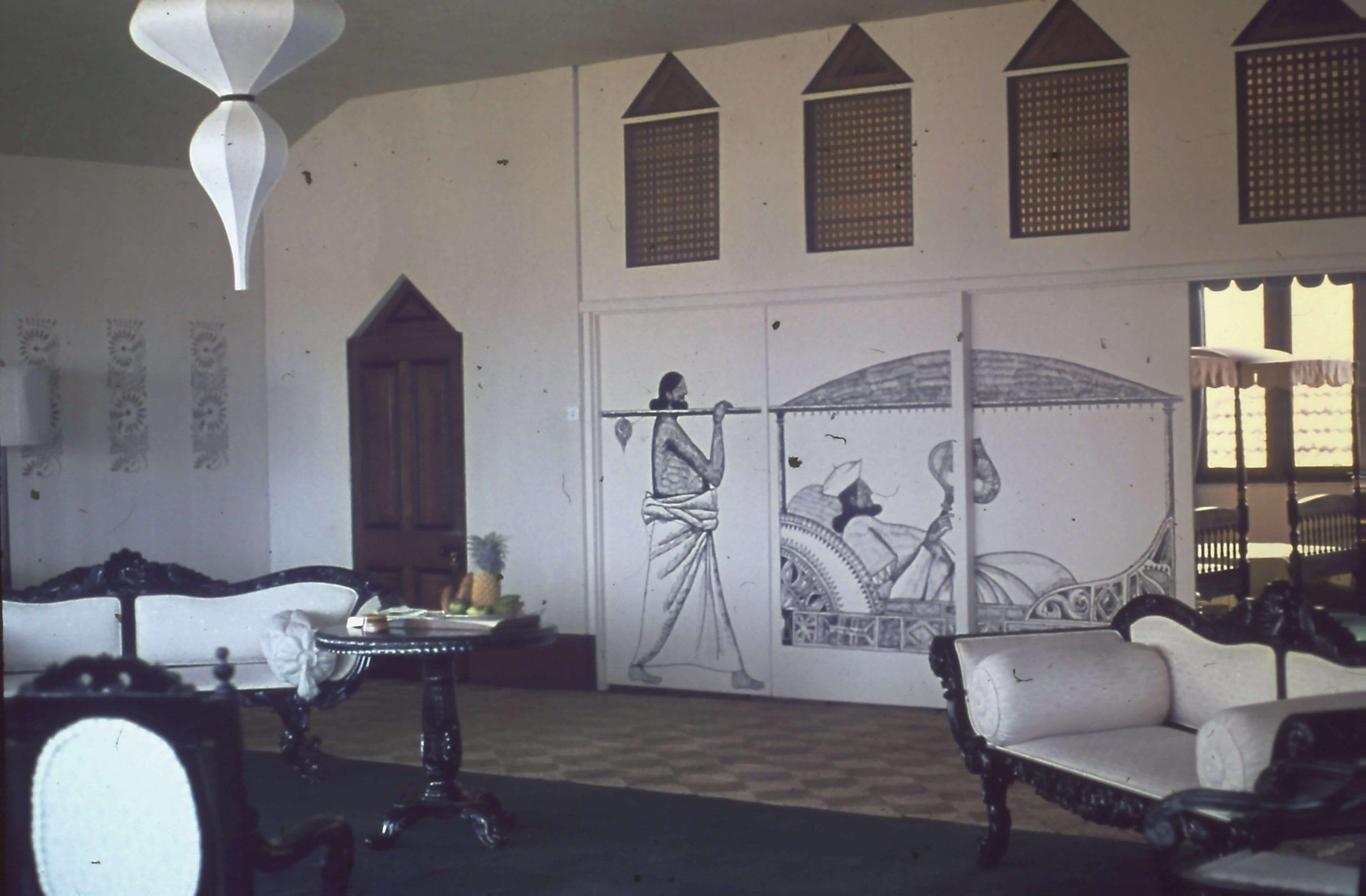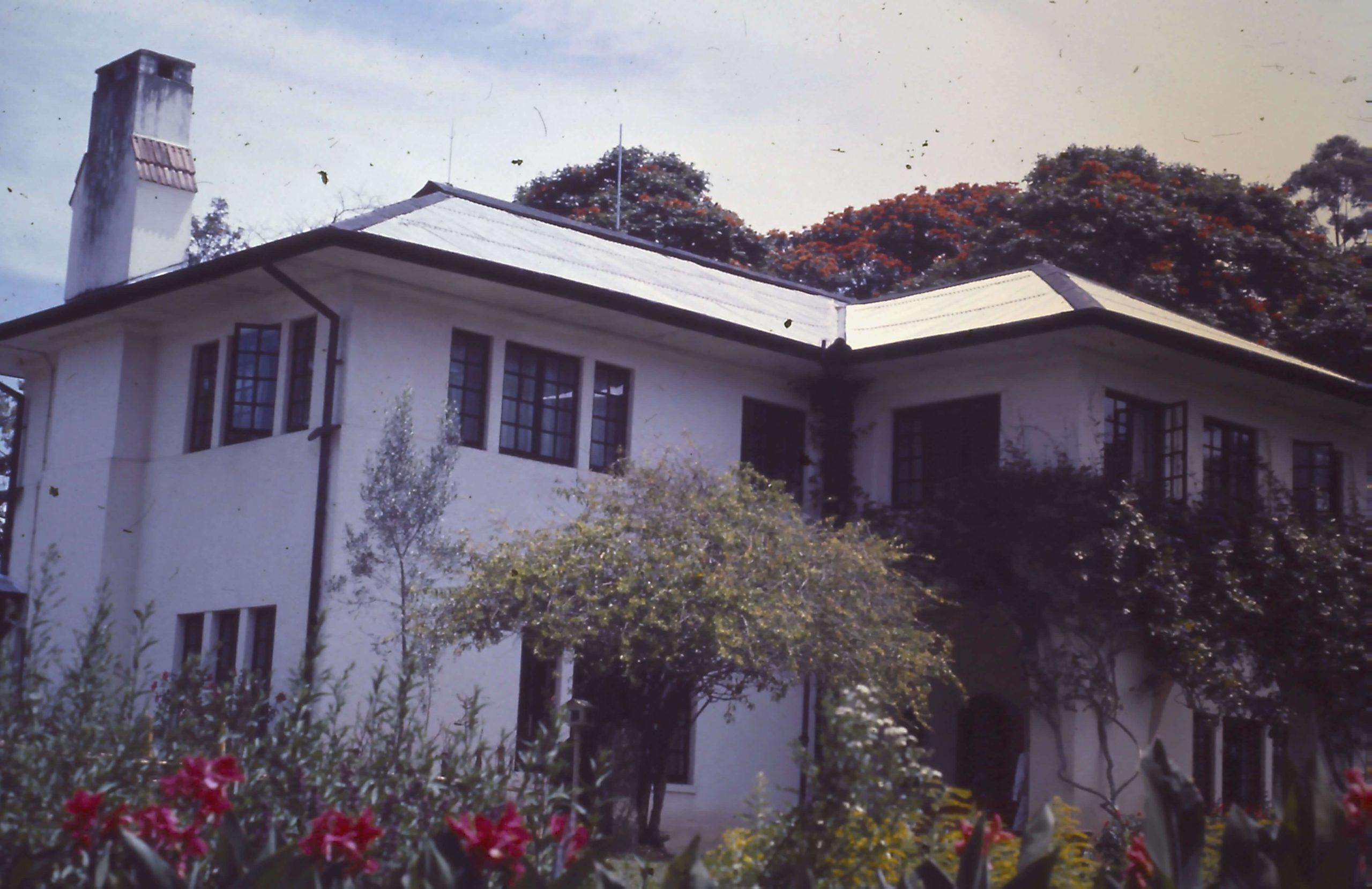Ajit Chitty, Raymond Hanna’s friend, took the complete preparation of my visit into his hands. Having developed an impression that the Lebanese were very choosy people, and since he was familiar with the basic standards of the Ceylon Tea Board’s level of hospitality, he made every effort through the travel agency that he owned – and capitalizing on his status as President of the Sri Lanka Tourist Association – to provide me with the best reception wherever I went. As my plane came to land, the cabin crew arranged that I be the first passenger to disembark. At the bottom of the stairs awaited a Morris limousine, and its staff whisked me through immigration and customs. The small black limousine, which had the Ceylon Tea Board’s sworded lion on its doors, drove me to the Galle Face Hotel, a two-story colonial building located on the waterfront in the middle of Colombo. The hotel manager, who was waiting at the front desk, personally accompanied me to the “King Emperor Suite” and showed me around all the amenities that they had arranged for my welcome.
The moment I was left on my own, I rubbed my eyes hard to find out if this was real or if I was dreaming. The suite had a big dining table on which was a large basket of tropical fruits that I had not seen or tasted before. My first meal in Colombo was a dinner of exotic fruits whose taste I will never forget. I went downstairs wanting to take a stroll by the waterfront, but I instantly realized that this was not advisable as the hotel grounds were fenced off and all the gates had guards carrying long sticks to stop crowds of beggars and young kids from crashing through the hotel gates.
The next day my official program began, and my first lesson, as I arrived at the training center, was understanding that tea was one of Sri Lanka’s primary exports. Hence the reason for my visit and the existence of the Ceylon Tea Board. I also learnt that the tea business on the island was originally started by the British-born James Taylor, who built Ceylon’s first tea estate in the hill country of Kandy in 1867. Many plantations soon spread all over the island and as many as 28 different grades of Ceylon tea continue to be produced.
My familiarization program included a tour of the different tea growing regions, beginning at the birthplace of Ceylon Tea, Kandy, who is also referred to as the hill capital of the Central Province. Tea here is grown at an elevation of 600 to 1,200 meters. I was also taught that the strength of the liqueur reduces with elevation, which is why Kandy generally produces a relatively stronger and deeper colored beverage.
My host arranged for my overnight stay at a very exclusive tourist spot: the house of the son of Winston Churchill, who owned the spacious plantation and yet had only visited once. It was a two-floor colonial villa type of structure, where the main reception, sitting room, library, dining room and games rooms were all located on the ground floor, while the sleeping quarters were on the second floor. The entire floor of the plantation house was covered with massive blocks of shinning parquet, and its walls were wood paneled.
As I was dead tired on arrival, I was escorted by the couple who looked after the house to the library. As I sat in a very comfortable armchair that faced the fireplace and I immediately went to sleep. I woke up to the smell of burning oak wood to find that my shoes had been removed, my feet were raised on a low, leather-covered Ottoman footrest, and I was covered with a woolen blanket. I got up and walked around, looking at the hundreds of leather-bound volumes on the shelves that reached up to the ceiling of this charming library. Then, I stepped into the dining room with its massive heavy wooden table, matching chairs and the glass covered china curio cabinets that displayed the shining exclusive silverware.
The housekeeper and his wife rushed to greet me again with what seemed to be one of their specialties, the five o’clock tea service, with all its trimmings of finger sandwiches, clotted cream, and home-made jam, as well as classic English scones. They were keen to hear about the country I came from, and I asked about the brilliance of the parquet and the silverware, wondering if the owner was due to visit soon. He wasn’t, but the two of them woke up every day to the same floor and silver polishing routine, so they would be ready if the master dropped in suddenly.
The next morning, I was escorted on a tour of the plantation, where I saw tens of girls carrying large baskets on their backs held in place by ribbons tied around their foreheads. They were climbing the green slopes at the crack of dawn and spending the entire day plucking the tea leaves and throwing them back into their baskets. Each tea leaf is picked by hand rather than by machine and these expert girls had developed the ability to pluck rapidly, setting a daily target of around 15 to 20 kilograms of tea leaves, which were then weighed and transported to the tea factory.
The tea factory on the Churchill Plantation was a multi-storied building. The tea leaves were taken to the upper floor where they were spread in troughs. This process, according to our trainer and guide, is known as withering, as it removes excess weight in the leaf. We then moved to another section of the factory where the withered leaves were being rolled on circular brass and wooden battened tables then placed in a rotating open cylinder from above, twisted, and parted. This step in the tea manufacturing process serves as a catalyst for the enzymes to react with the oxygen in the air, especially when black tea is being produced.
I was further shown that after rolling is finished, the leaf particles are spread out on a table where they begin to ferment upon being exposed to heat. However, the preliminary heat is from the natural air temperature, so fermentation time fluctuates according to the temperature and humidity, which require a great deal of attention. Failure to follow the exact guidelines will make the flavor disappear. The color of the leaf changes from green to a bright coppery color, as the oxidization is completed. The fermented leaves are then inserted into a firing chamber to prevent further chemical reactions from taking place and to retain the flavor. Again, the regulation of the temperature plays an important role in the final quality of the tea, and on completion the tea will become black and hard.
Kandy allowed my host to add a fascinating touristic component to my program by spending the last day of my stay at the capital of Buddhism in Sri Lanka. I visited the Temple of the Sacred Tooth, which was originally built by the Kandyan Kings around 1687 to house and honor the sacred tooth of Buddha. According to Buddhist beliefs, this tooth was smuggled into Sri Lanka after being taken from the Buddha as he lay on his funeral pyre and was hidden in the hair of a princess who fled from the Hindu armies that were besieging her father’s kingdom in India. It was placed on a gold lotus flower and enshrined inside a nested jeweled casket fronted by two large elephant tusks. On special occasions the relic was paraded around the streets of Kandy on the back of an elephant, as elephants were sacred in the Buddhist religion. The tooth immediately became an object of immense reverence, and a symbol of power and authority. It was the responsibility of Sri Lankan monarchs to safeguard the tooth relic, and it was believed that whoever held it, also held the governance of the country. As a result, over the centuries there were several attempts at the temple, but the tooth remained safe.
The temple buildings are rather striking with their red roofs and white stonewalls overlooking Kandy Lake. After Kandy, the training took me to the Central Province and the region of Nuwara Elia, best known for its whole-leaf orange pekoe tea. Due to its climate, the highest altitudes of over 1,800 meters and moderate rainfall, the Nuwara Elia possesses a highly conducive environment for tea cultivation. We also spent time at the plantations of Uva Province, which is admired for its natural beauty and untamed rugged terrain. The tea produced in Uva is of distinctive character and is mellow and smooth on the palate. The region produces a wide range of grades and green tea as well.
My week in Sri Lanka was another university course, this time in tea growing, manufacturing, and blending, as well as an advanced specialization in West Asian geography.


